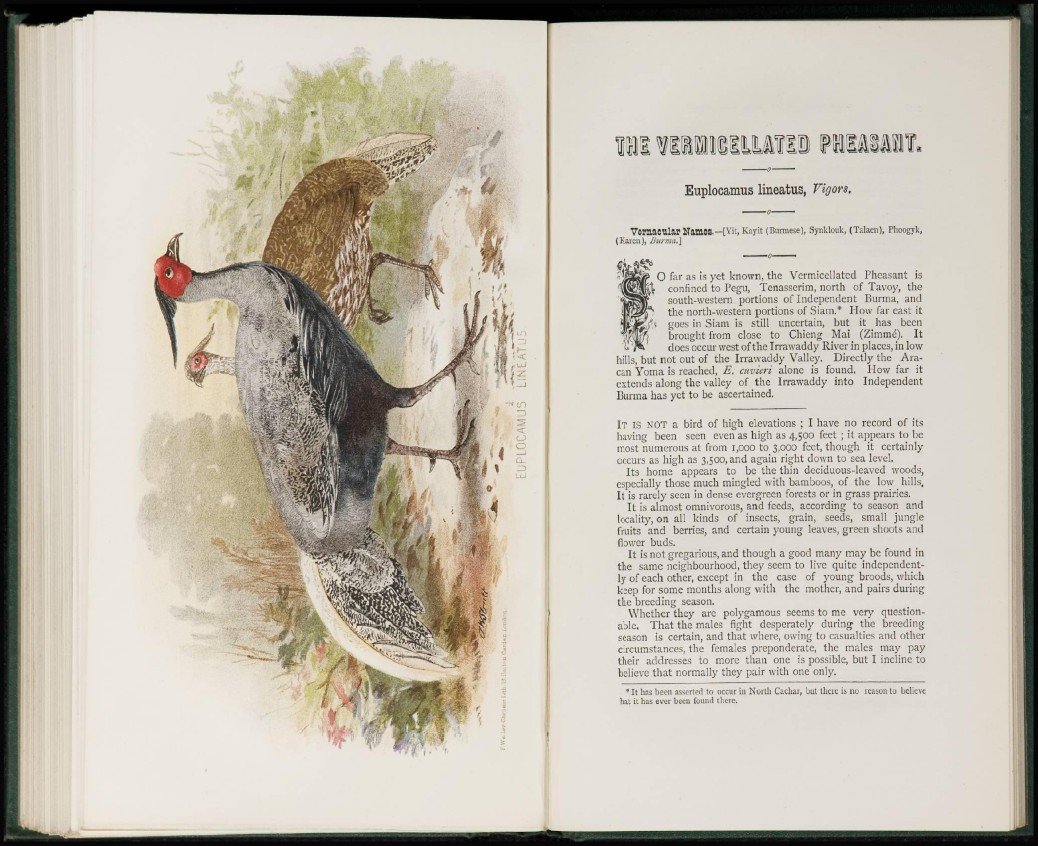
rat ^ i i M i u j f I i rasAtamr.
Euplocamus lineatus, Vigors.
V o m a C U l a r ITamCSS.—[Vit, Kayit (Burmese), Synklouk, (Taben), Phoogyk,
(Karen), Burma,]
fO far as is yet known, the Vcrmiccllatcd Pheasant is
confined to Pegu, Tcnasserim, north of Tavoy, the
south-western portions of Independent Burma, and
the north-western portions of Siam.* How far east it
i goes in Siam is still uncertain, but it has been
brought from close to Chieng Mai (Zimme). It
does occur west of the Irrawaddy River in places, in low
hills, but not out of the Irrawaddy Valley. Directly the Aracan
Yoma is reached, E. cuvieri alone is found. How far it
extends along the valley of the Irrawaddy into Independent
Burma has yet to be ascertained.
IT IS NOT a bird of high elevations ; I have no record of its
having been seen even as high as 4,500 feet ; it appears to be
most numerous at from 1,000 to 3,000 feet, though it certainly
occurs as high as 3,500, and again right down to sea level.
Its home appears to be the thin deciduous-leaved woods,
especially those much mingled with bamboos, of the low hills.
I t is rarely seen in dense evergreen forests or in grass prairies.
It is almost omnivorous, and feeds, according to season and
locality, on all kinds of insects, grain, seeds, small jungle
fruits and berries, and certain young leaves, green shoots and
flower buds.
It is not gregarious, and though a good many may be found in
the same neighbourhood, they seem to live quite independently
of each other, except in the case of young broods, which
keep for some months along with the mother, and pairs during
the breeding season.
Whether they arc polygamous seems to me very questionable.
That the males fight desperately during the breeding
season is certain, and that where, owing to casualties and other
circumstances, the females preponderate, the males may pay
their addresses to more than one is possible, but I incline to
believe that normally they pair with one only.
* It has been asserted to occur in North Cacliar, but there is no reason to believe
hat it has ever been found there.